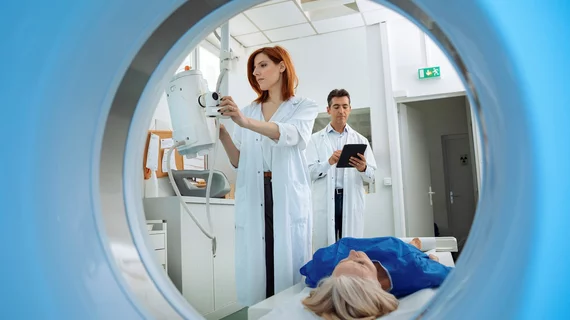‘Time is now’: Stakeholders must take action to curtail low-value imaging, other services
The Choosing Wisely campaign has successfully identified imaging and other tests as prime opportunities for reducing low-value care, but it’s now time healthcare leaders turn these insights into action, experts advised recently.
Since its launch in 2012, Choosing Wisely has singled out 626 services as targets to cut U.S. healthcare spending. Most include imaging (26.8%) and lab studies (24.9%), with more than half associated with additional downstream services.
Nine years into the program, however, reductions in these low-value services have been “modest at best,” researchers noted Dec. 3 in JAMA Internal Medicine. Their findings present stakeholders with an opportunity to do more.
“We need scalable local, regional, and national multistakeholder efforts to leverage recommendations into meaningful improvements,” Ishani Ganguli, MD, MPH, with Harvard Medical School, and co-authors explained. “Choosing Wisely has been a helpful tool for raising awareness, but it cannot be the final word.”
The team set out to understand how Choosing Wisely recommendations have changed over time and find new opportunities to curtail low-value services and spending. They analyzed all 626 recommendations from U.S. physician societies as of March 2021.
Imaging and lab studies were listed most often, with such services commonly performed among patients with chronic conditions and those who were healthy or who only had risk factors for a certain indiciation.
when performed for chronic conditions and healthy patients with only risk factors.
Most services were revenue-neutral for the society recommending them and low-cost items represented an increasingly larger share of low-value services since the program’s inception, the authors noted.
Finally, 44.7% of Choosing Wisely recommendations were linked to a high potential for direct harm and 62% included services that were likely to trigger downstream events, such as additional services.
Turning insight into action
Just as Ganguli and colleagues suggested, a trio of editorialists noted the campaign has raised awareness but is not associated with a reduction of low-value services. And they warned that new, updated service lists won’t do the job.
“After a decade primarily dedicated to describing the prevalence and harms associated with medical overuse, we believe the time is now to focus on multipronged interventions and implementation strategies for value-based care at the policy, structural, and education levels,” Niloofar Latifi, MD, with Johns Hopkins University School of Medicine and co-authors urged Dec. 6.
For one, strategies for cutting out low-value practices should be central to undergraduate and postgraduate curriculum, the authors noted. Audits, clinical decision support and other feedback tools may also be helpful, Latifi et al. went on to say.
But ultimately, health systems must be incentivized to reduce low-value services and hospitals should require physicians to justify low-value care. Those who deliver cost-conscious care, meanwhile, should be rewarded, the editorialists concluded.
Read the full study here along with the accompanying perspective piece here.

